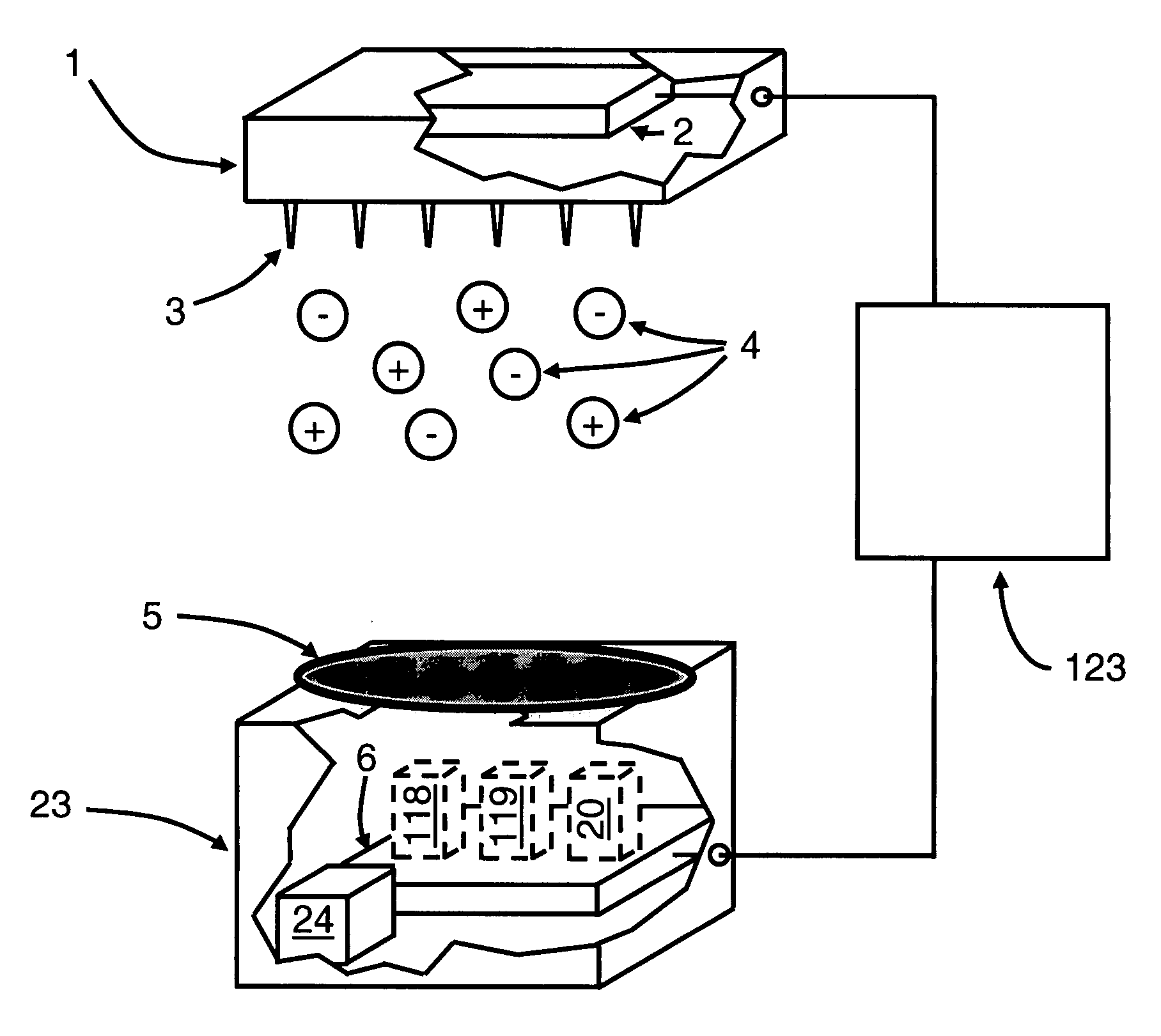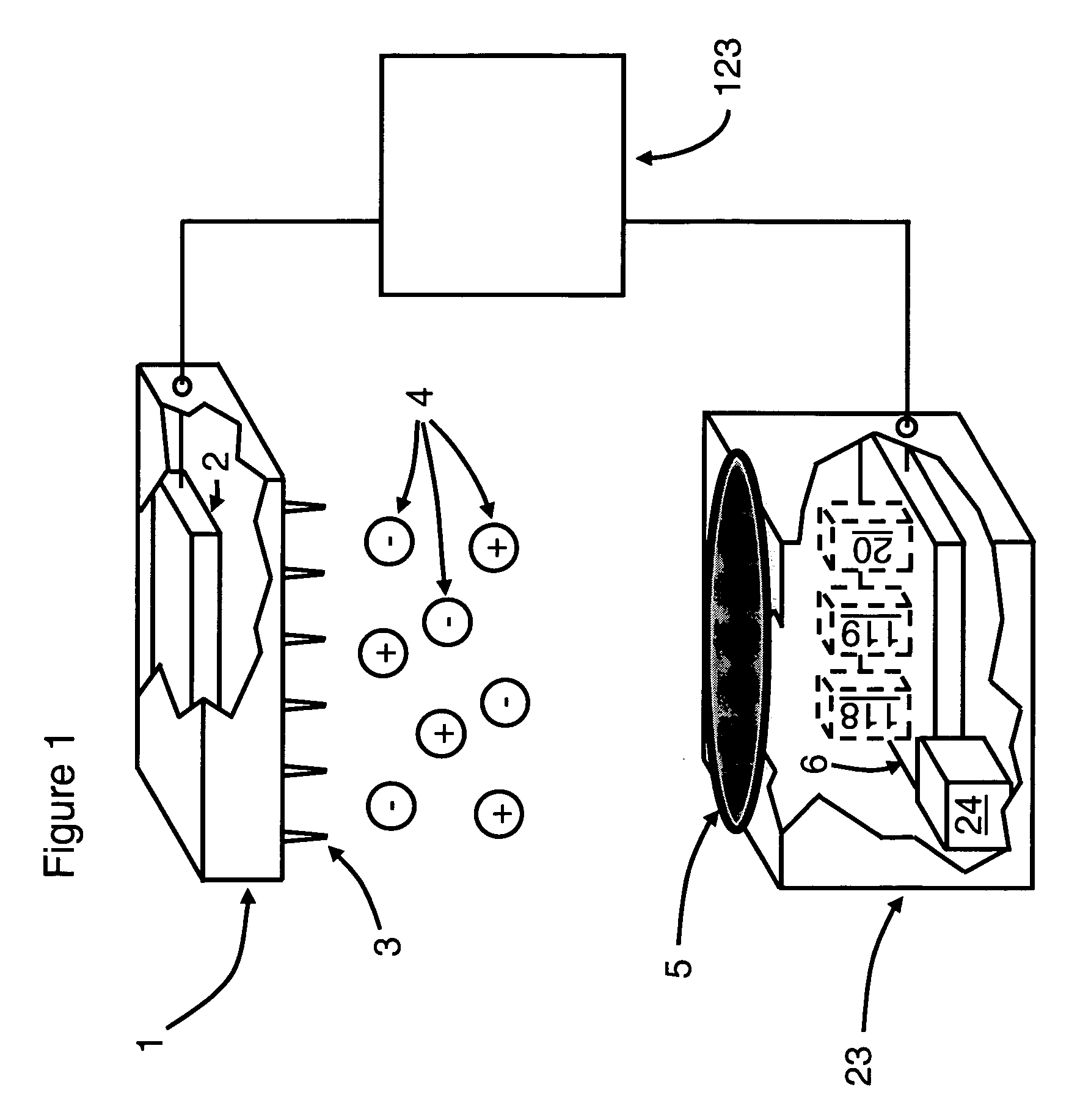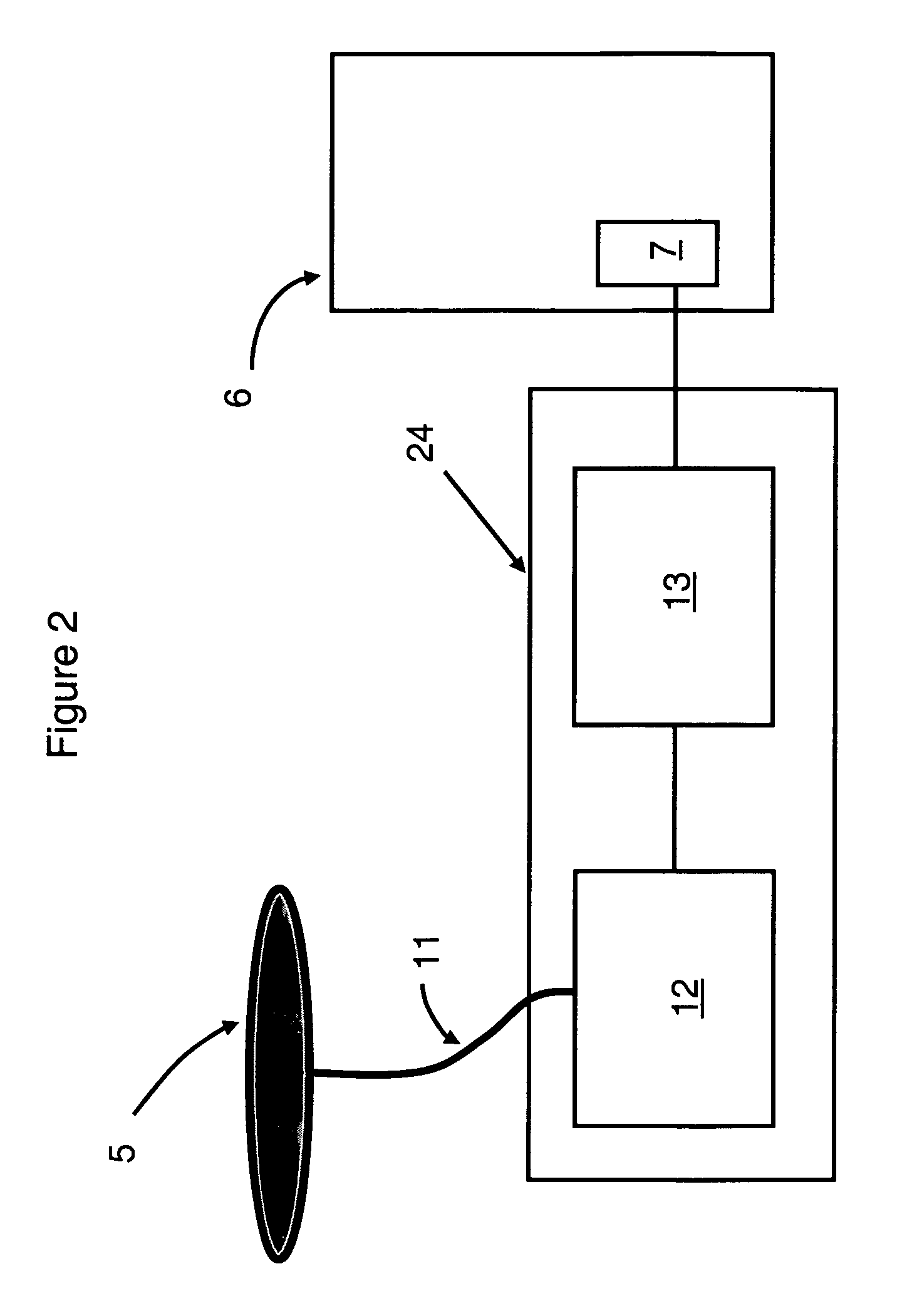Remote sensor for controlling ionization systems
- Summary
- Abstract
- Description
- Claims
- Application Information
AI Technical Summary
Benefits of technology
Problems solved by technology
Method used
Image
Examples
Embodiment Construction
[0038]FIG. 1 shows one or more ionizers 1 and a remote sensor 23 operating in a feedback loop through an intermediate controller module 123. One or more high voltage power supplies 2 places a high voltage on the corona electrodes 3 to produce air ions 4.
[0039]The invented remote sensor 23 receives the air ions 4 which reach the remote sensor plate 5. These air ions 4 embody the information on both balance and swing, but the remote sensor plate 5 itself does not separate the swing signal from the balance signal.
[0040]As shown in FIG. 2, a pre-amplifier 24 receives the total signal from the remote sensor plate 5 through the antenna 11. The pre-amplifier 24 contains a low impedance transconductance amplifier 12 and an adjustable gain controller 13. Both the low impedance transconductance amplifier 12 and the adjustable gain controller 13 are built from commercially available components and based on low-drift op amps. Functionally, the pre-amplifier 24 amplifies the balance portion of t...
PUM
 Login to View More
Login to View More Abstract
Description
Claims
Application Information
 Login to View More
Login to View More - R&D
- Intellectual Property
- Life Sciences
- Materials
- Tech Scout
- Unparalleled Data Quality
- Higher Quality Content
- 60% Fewer Hallucinations
Browse by: Latest US Patents, China's latest patents, Technical Efficacy Thesaurus, Application Domain, Technology Topic, Popular Technical Reports.
© 2025 PatSnap. All rights reserved.Legal|Privacy policy|Modern Slavery Act Transparency Statement|Sitemap|About US| Contact US: help@patsnap.com



